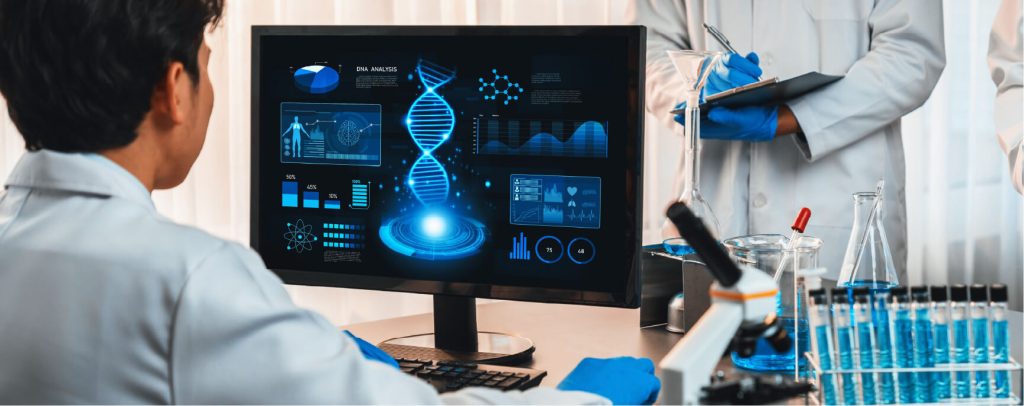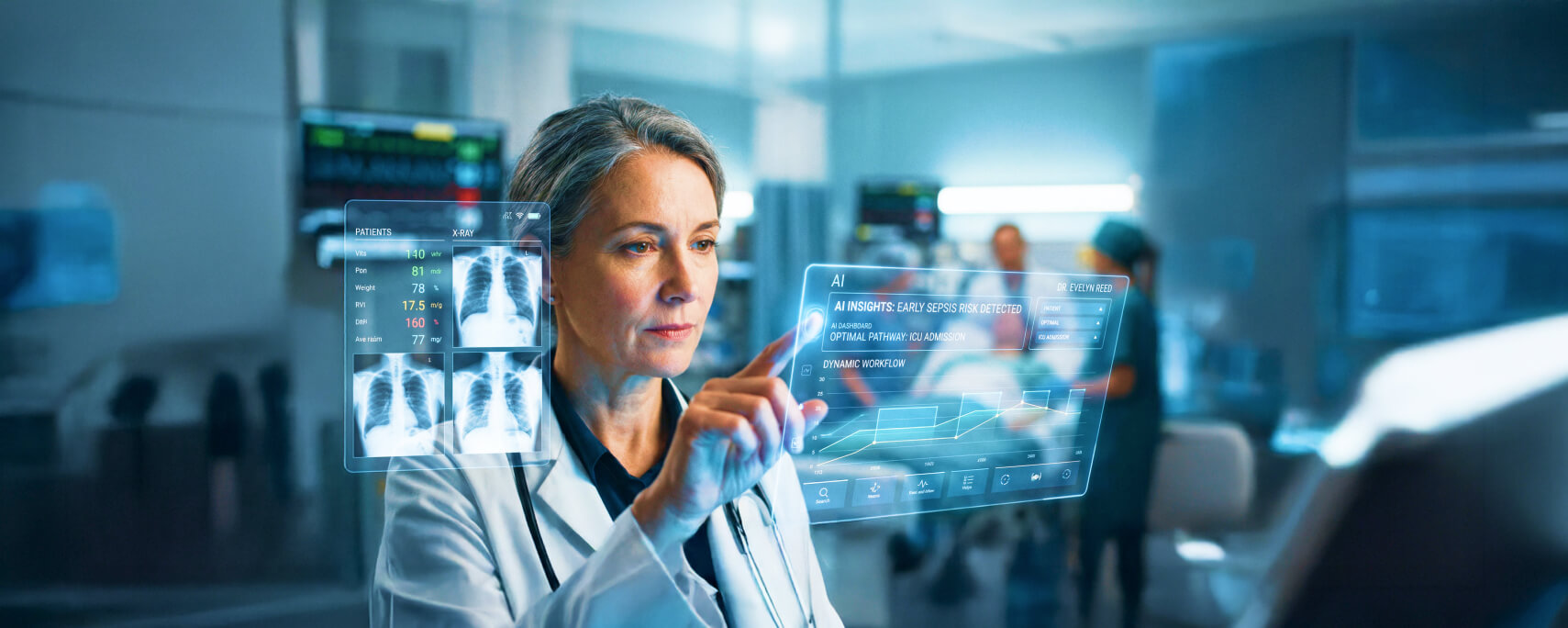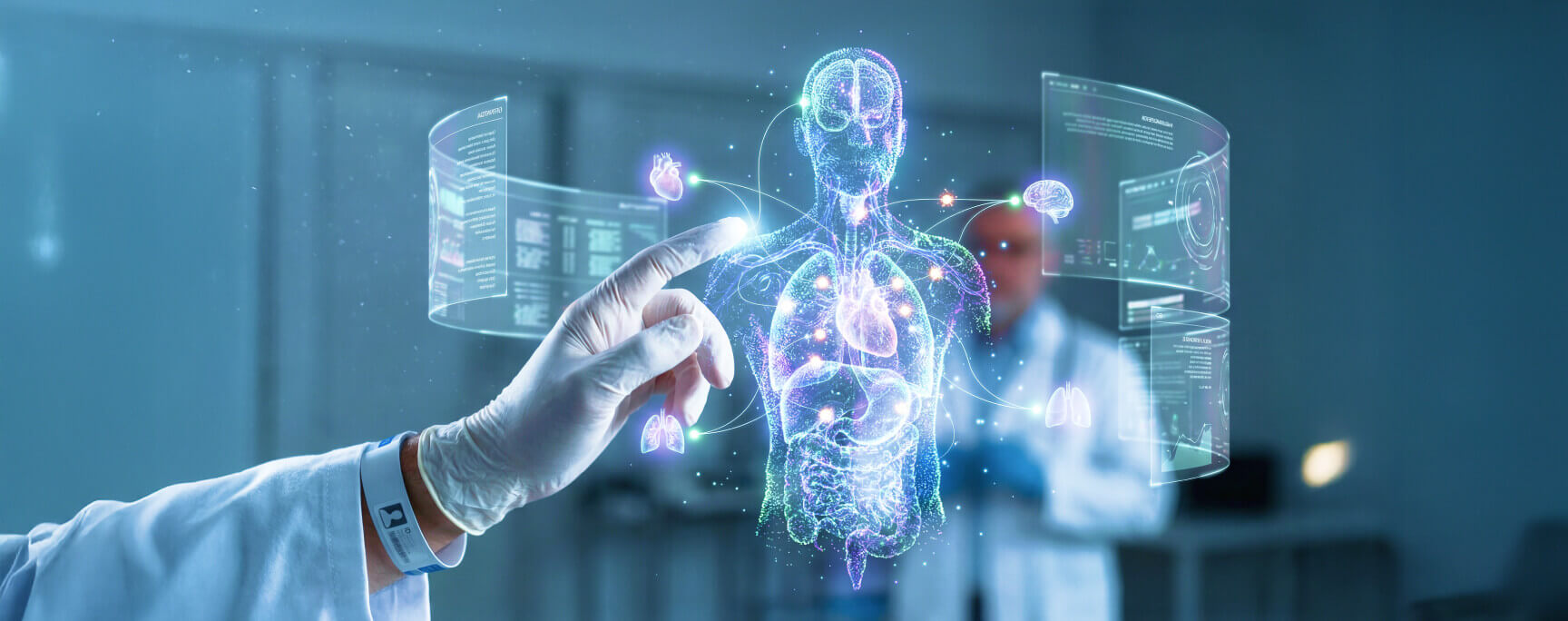AI in Lab Diagnostics : Use Cases , Applications & Benefits
If there is any industry where AI has already brought a change, it is Healthcare. AI for diagnostics is no different. Laboratory medicine, the backbone of clinical decision-making, is at the cusp of radical reinvention through AI in lab diagnostics. AI for lab diagnostics can do everything, from predicting disease progression to automating routine laboratory tasks. In fact, we are only getting started. This shift is much more than just a technical improvement; it signifies a significant shift in healthcare toward a model of ongoing preventive intervention and health optimization.
The Current State of Laboratory Medicine
Traditional laboratory medicine has served as the foundation of healthcare for decades, providing critical lab data that influences approximately 70% of all medical decisions. However, AI in lab diagnostics can successfully address the major issues facing the current system.
Laboratory professionals are grappling with increasing test volumes, staff shortages, complex workflows, and the relentless demand for faster turnaround times. Manual processes, from sample preparation to result in interpretation, create bottlenecks and can delay patient care. While human error is minimized through strict protocols, the risk remains, especially in high-volume environments.
Diagnosing complex cases often needs expert input that lab professionals may lack, especially in small or remote facilities.
AI Technologies Transforming Laboratory Diagnostics
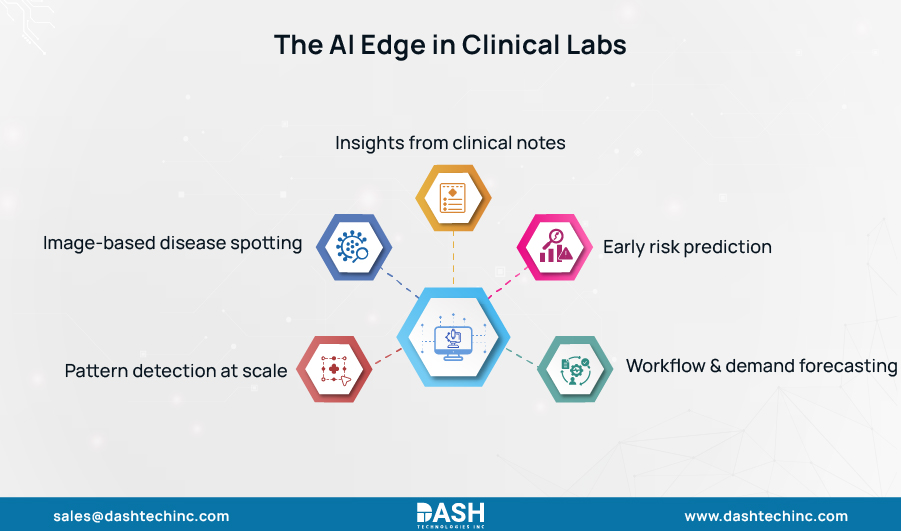
Machine Learning and Pattern Recognition
Machine learning algorithms are being used to automate clinical lab processes and analysis. The key advantage of these systems is their ability to recognize patterns in large amounts of data that would be beyond the capability of human analysts to detect consistently. Machine learning models, trained on thousands of images, can identify cellular abnormalities, bacterial colonies, or tissue structures with high accuracy.
A subset of machine learning, known as deep learning networks, is particularly adept at image analysis tasks. In pathology, these systems can look at tissue samples and find cancerous cells with accuracy rates that are often as good as or better than those of experienced pathologists. The use of AI for diagnostics can help augment human expertise, providing a second, highly accurate opinion that can identify subtle abnormalities.
Natural Language Processing
Natural language processing (NLP) allows laboratories to gain useful information from previously untapped unstructured data. Patient histories, physician notes, and previous test results can be searched automatically to provide context for current diagnostic tests. It can also help labs prioritize urgent testing and predict complications before they become serious.
Predictive Analytics in Laboratory Medicine
One of the most promising uses of AI technology is predictive analytics in labs. AI systems can identify patients who are likely to develop specific conditions before symptoms appear by analyzing clinical indicators, patient demographics, and historical data. This proactive clinical diagnostics automation approach enables earlier intervention and better patient outcomes.
Predictive analytics in labs can also streamline laboratory operations by predicting demand for tests, pinpointing equipment maintenance requirements ahead of time before actual failures occur, and better managing inventory. These functions cut waste, reduce downtime, and ensure essential tests are always available when requested.
Transform Your Lab with AI-Powered Precision
Leverage our deep healthcare tech expertise to enhance diagnostic accuracy, automate workflows, and deliver scalable, future-ready lab solutions.
Partner with UsClinical Applications and Use Cases
Pathology and Histology
Digital pathology is one of the most mature areas of AI lab diagnostic applications. AI systems can analyze tissue samples, identify cancerous cells, and predict treatment effectiveness based on tumor data. They are able to do so by scanning digitized slides and running pattern recognition algorithms that are trained with millions of similar images.
Systems of this nature are extremely useful in the developing world, where the pathology expertise available in local hospitals may be non-existent. AI-powered diagnostic tools can provide at least a preliminary analysis while awaiting sample transport to a center of expertise for confirmation.
Blood analysis and hematology
AI systems for hematology can be used to perform blood analysis to count and identify various cell types with incredible speed and accuracy. These systems can detect rare and abnormal cells, as well as highlight cases that need a manual review. AI in lab diagnostics have particular value in detecting blood cancers, where early detection can make a crucial difference in treatment outcomes.
Clinical diagnostics automation can also analyze blood smears for parasitic infections like malaria with over 95% accuracy, which is crucial in malaria-endemic areas where early diagnosis can be the difference between life and death.
Microbiology and Infectious Disease Detection
Automation of clinical diagnostics in microbiology includes the analysis of infectious agents. Artificial intelligence systems may be able to determine the bacterial growth pattern, detect antibiotic resistance markers, and predict treatment outcomes based on the properties of the pathogen.
These systems are especially useful during outbreaks of disease, when swift identification and characterization of pathogens can help guide public health actions. AI-based diagnostic tools were used to great effect during the COVID-19 pandemic, facilitating swift testing and result interpretation.
Laboratory Information Management and Workflow Optimization
Predictive analytics in labs is currently being applied to optimize laboratory operations through intelligent workflow management and resource allocation. These systems use historical data patterns, workload forecasting, and operational constraints to manage laboratory processes and resource allocation intelligently.
Current implementations include sample prioritization algorithms that route urgent specimens through expedited workflows, staffing optimization systems that predict workload patterns and adjust personnel schedules accordingly, and inventory management systems that automatically reorder supplies based on usage patterns and testing forecasts. These applications are improving laboratory efficiency by up to 40% while reducing operational costs and improving service delivery.
Key Benefits of AI in Lab Diagnostics
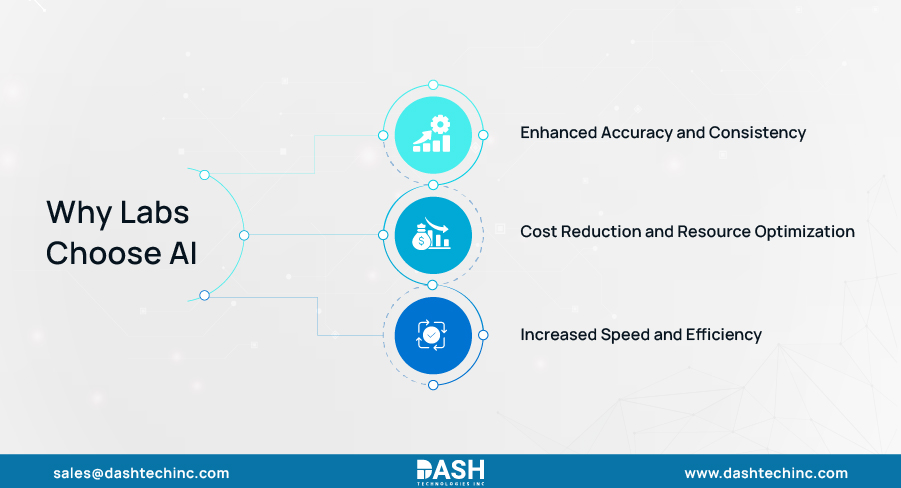
Enhanced Accuracy and Consistency
AI for diagnostics provides unprecedented accuracy & consistency. Unlike humans, AI systems are not prone to fatigue or cognitive biases, which ensures consistent performance even during peak workloads. Moreover, AI excels at spotting minute anomalies and patterns that might go unnoticed by human analysts.
Increased Speed and Efficiency
AI-driven lab automation dramatically increases the speed of sample analysis, with certain systems completing tasks in minutes rather than hours. This rapid processing is critical in emergency scenarios where timely diagnosis is crucial, and it also enables around-the-clock diagnostic capabilities, vastly improving productivity.
Cost Reduction and Resource Optimization
Predictive analytics in labs offer cost reduction advantages by automating repetitive tasks and streamlining workflows. This results in more efficient use of highly skilled staff, helps mitigate staffing shortages, and provides even small or remote labs with access to expert-level diagnostic insights.
Final Thoughts
Artificial intelligence is shaping the future of diagnostics, with a strong emphasis on disease detection, diagnosis, and treatment. The combination of predictive analytics in laboratory medicine and clinical laboratory automation is a powerful one that will have a significant impact on the future of laboratory medicine; that is shifting toward more accurate, efficient, and accessible healthcare.
As we progress, the effective adoption of these technologies will require serious planning, substantial investment, and a commitment to continuous learning and adaptation. Organizations that wish to adapt to these changes early & implement them thoughtfully to position themselves for delivering better patient care while preserving operational efficiency should contact Dash Technologies today!
About Dash

Dash Technologies Inc.
We’re technology experts with a passion for bringing concepts to life. By leveraging a unique, consultative process and an agile development approach, we translate business challenges into technology solutions Get in touch.
